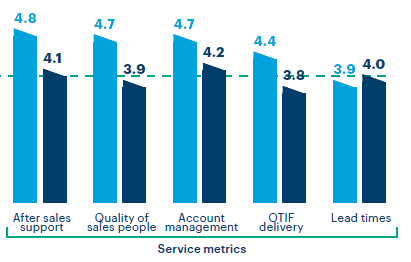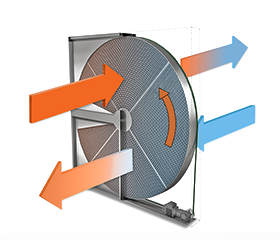Heat recovery devices form a key growing category within our low-carbon sales. This year, with the acquisition of ERI, we have strengthened our position for future growth.
Introduction to energy recovery technology
A key approach to decarbonisation of buildings is preventing energy loss in heated or cooled air as it is exhausted from the building for ventilation. To prevent the energy loss, heat recovery cells can be used in the airstream to ensure the energy is recovered. This year, Volution acquired Energy Recovery Industries (ERI), which is a global supplier of key heat recovery technology.
ERI – overview
Established in 2010, ERI designs and manufactures a range of innovative and highly efficient air-to-air heat recovery devices for use in industrial, commercial and residential ventilation systems. Products are manufactured in ERI’s modern, high quality production facility in Bitola, North Macedonia, and are supplied to heat recovery and air handling unit manufacturers around the world.
ERI: Customer service excellence
Since its inception, ERI has been focused on delivering the best possible customer experience and, as part of the acquisition process, Volution carried out a third party customer referencing exercise. This benchmarking exercise was carried out with a range of international customers, with ERI consistently outscoring competitors on a range of product and service metrics. The pre-existing expansion plan referenced in our public announcement in September 2021 supports further growth ambitions and delivers improvements to availability and a reduction in lead times.
ERI’s performance score vs key performance criteria
Average score: 1 = poor, 5 = outstanding


Energy recovery technology
ERI manufactures three types of heat exchangers: plate, rotary and an integrated enthalpy solution branded Accuair.
Plate heat exchangers

Plate heat exchangers consist of a series of plates stacked together which form a large internal surface area. Air is then exhausted from inside the building and passed over one side of the plates and at the same time fresh air is introduced into the building on the opposite side of the plates. The large surface area allows heat to be transferred from one side to the other. The process allows recovery of energy by either passing energy from heated air leaving the building into the incoming air in buildings in colder climates or passing heat into the outgoing air for air-conditioned buildings in warmer climates. In this way it recovers energy in all climates. The exchangers can be up to 93% efficient.
Rotary heat exchangers

Rotary heat exchangers are a regenerative type of air-to-air heat exchanger that consists of a rotating wheel. During the heating season, air is exhausted from the building, warming the rotating disc. Air from outside is introduced across the opposite side of the disc, recovering the heat and also capturing the humidity released from the disc, so enriching the air to prevent it drying out. This process provides heat exchangers with up to 85% efficiency.
Accuair

In colder, dry climates, plate heat exchangers offer very high efficiency but can remove too much moisture from the air as it condenses on the colder sections of the plates. This can cause excessive drying out of the air. Accuair has been designed as an enthalpy system to also recover up to 70% of the moisture. It does this whilst retaining an efficiency of up to 95% and prevents the air becoming too dry.


